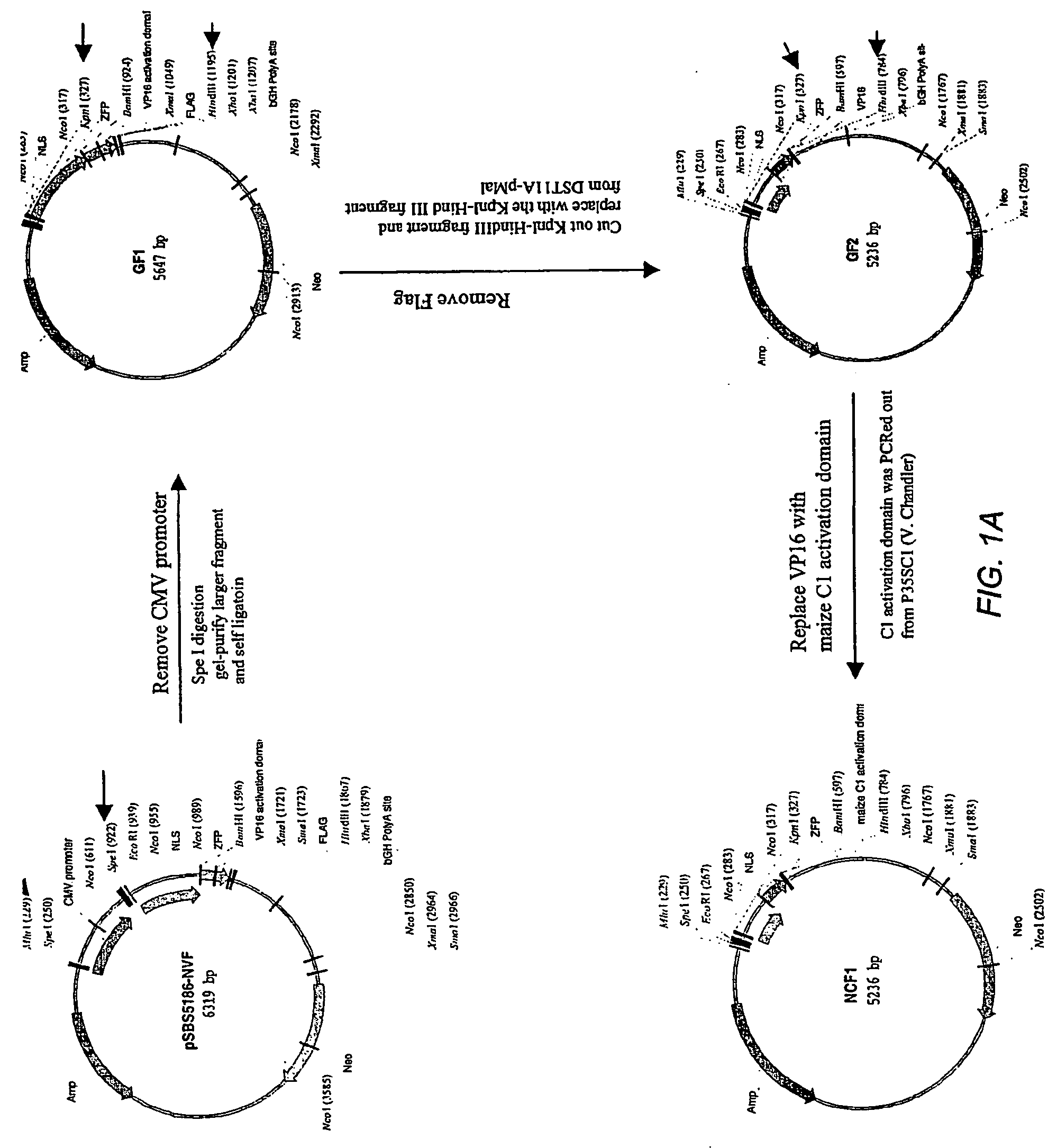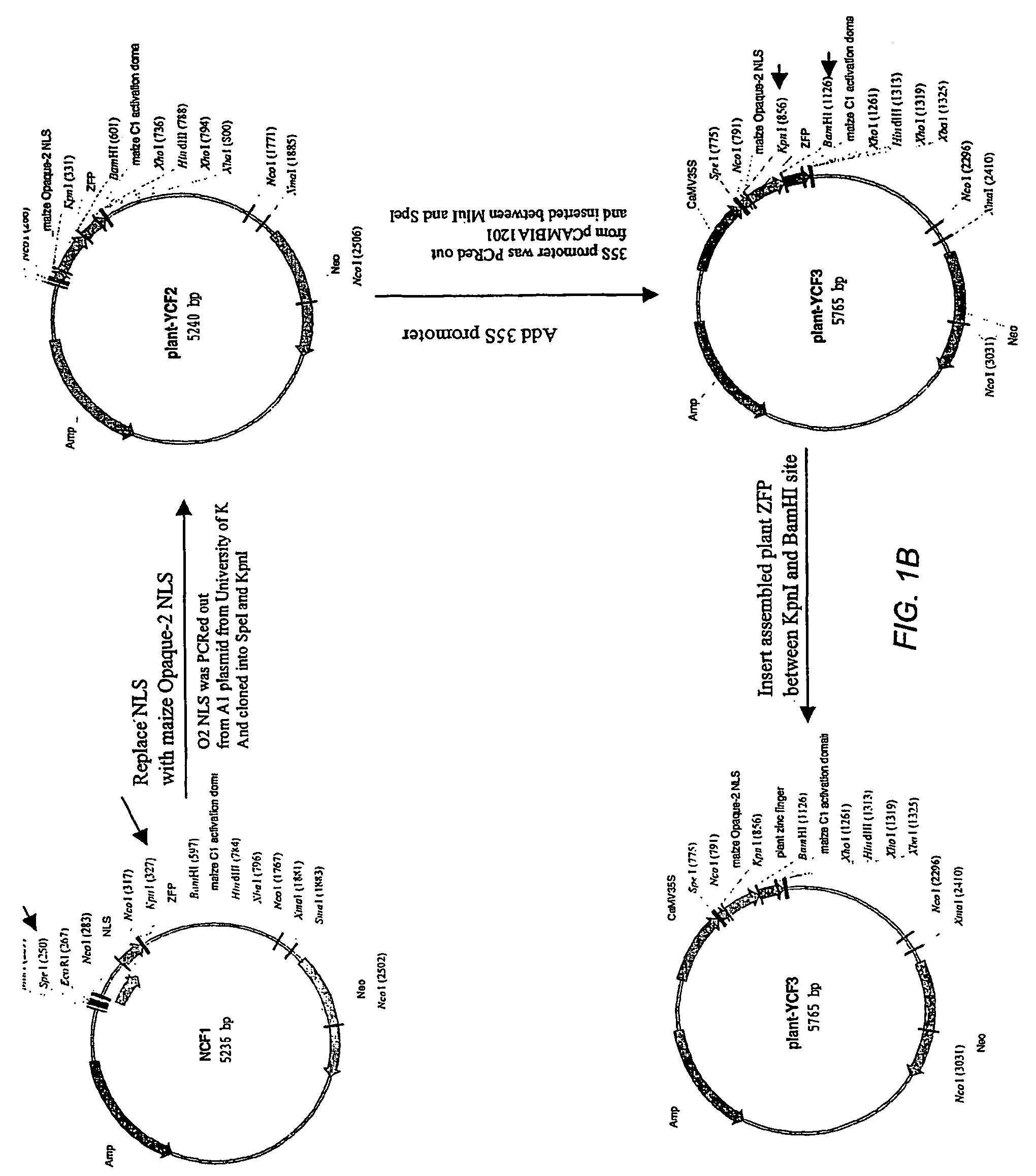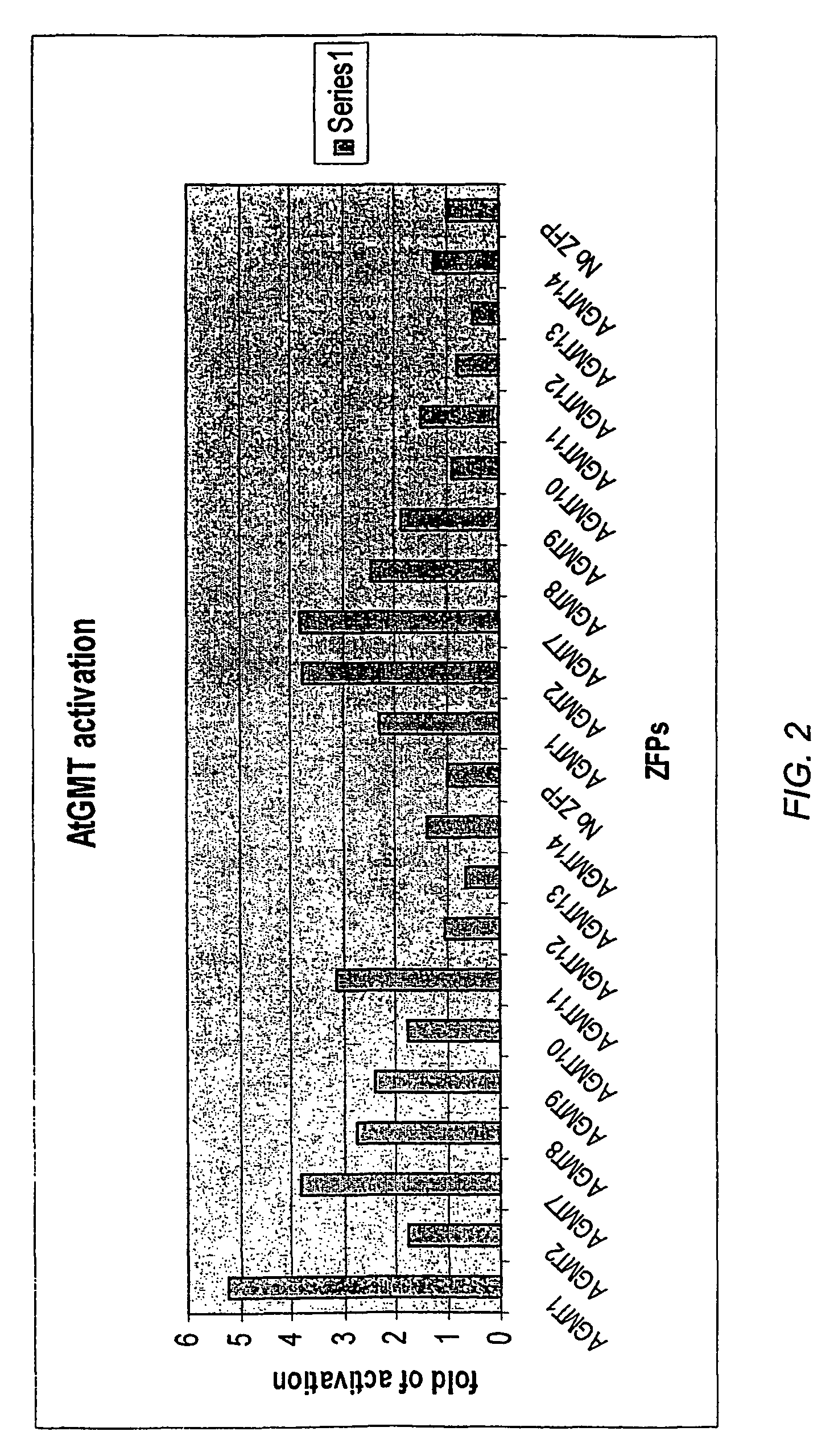Zinc finger proteins for DNA binding and gene regulation in plants
a technology of dna binding and zinc finger proteins, applied in the field of gene expression regulation, can solve the problems of not being able to find an immediate solution, and it is difficult, if not impossible, to design a plant zfp capable of recognizing, and achieve the effect of altering the phenotype and/or composition
- Summary
- Abstract
- Description
- Claims
- Application Information
AI Technical Summary
Benefits of technology
Problems solved by technology
Method used
Image
Examples
example 1
Production of Modified Plant Zinc Finger Binding Proteins
[0127]This example describes a strategy to select amino acid sequences for plant zinc finger backbones from among existing plant zinc finger sequences, and subsequent conceptual modification of the selected plant zinc finger amino acid sequences to optimize their DNA binding ability. Oligonucleotides used in the preparation of polynucleotides encoding proteins containing these zinc fingers in tandem array are then described.
[0128]A. Selection of Plant Zinc Finger Backbones
[0129]A search was conducted for plant zinc fingers whose backbone sequences (i.e., the portion of the zinc finger outside of the −1 through +6 portion of the recognition helix) resembled that of the SP-1 consensus sequence described by Berg (1992) Proc. Natl. Acad. Sci. USA 89:11,109-11,110. The sequences selected included the two conserved cysteine residues, a conserved basic residue (lysine or arginine) located two residues to the C-terminal side of the se...
example 2
Construction of a Polynucleotide Encoding a Modified Plant Zinc Finger Protein for Binding to a Predetermined Target Sequence
[0140]A modified plant zinc finger protein was designed to recognize the target sequence 5′-GAGGGGGCG-3′ (SEQ ID NO:26). Recognition helix sequences for F1, F2 and F3 were determined, as shown in Table 1, and oligonucleotides corresponding to H1, H2 and H3 above, also including sequences encoding these recognition helices, were used for PCR assembly as described above.
[0141]
TABLE 1FingerTargetHelix sequenceNucleotide sequence for PCR assemblyF1GCGRSDELTR5′CTCACCGGTGTGAGAACGCTTGTGACGGGTCAACT(SEQ ID NO:28)SEQ ID NO:27CGTCAGAACGCTTGAAAACACGGAA-3′F2GGGRSDHLTR5′TTCACCAGTATGAAGACGCTTATGACGGGTCAAGT(SEQ ID NO:30)SEQ ID NO:29GGTCAGAACGAGAAAAAGACTTACC-3′F3GAGRSDNLTR5′CTTCTTGTTCTGGTGGATACGCACGTGACGGGTCA(SEQ ID NO:32)SEQ ID NO:31AGTTGTCAGAACGACCGAACTTACGCTG-3′
[0142]Subsequent to the initial amplification, a secondary amplification was conducted, as described above, using ...
example 3
Construction of Vectors for Expression of Modified Plant ZFPs
[0146]YCF3 was generated as shown schematically in FIG. 1. The starting construct was a plasmid containing a CMV promoter, a SV40 nuclear localization sequence (NLS), a ZFP DNA binding domain, a Herpesvirus VP16 transcriptional activation domain and a FLAG epitope tag (pSB5186-NVF). This construct was digested with SpeI to remove the CMV promoter. The larger fragment was gel-purified and self-ligated to make a plasmid termed GF1. GF1 was then digested with KpnI and HindIII, releasing sequences encoding the ZFP domain, the VP16 activation domain, and the FLAG epitope tag, then the larger fragment was ligated to a KpnI / HindIII fragment containing sequences encoding a ZFP binding domain and a VP16 activation domain, named GF2. This resulted in deletion of sequences encoding the FLAG tag from the construct.
[0147]GF2 was digested with BamHI and HindIII, releasing a small fragment encoding the VP16 activation domain, and the lar...
PUM
| Property | Measurement | Unit |
|---|---|---|
| hydrophobic | aaaaa | aaaaa |
| three-dimensional structure | aaaaa | aaaaa |
| structure | aaaaa | aaaaa |
Abstract
Description
Claims
Application Information
 Login to View More
Login to View More - R&D
- Intellectual Property
- Life Sciences
- Materials
- Tech Scout
- Unparalleled Data Quality
- Higher Quality Content
- 60% Fewer Hallucinations
Browse by: Latest US Patents, China's latest patents, Technical Efficacy Thesaurus, Application Domain, Technology Topic, Popular Technical Reports.
© 2025 PatSnap. All rights reserved.Legal|Privacy policy|Modern Slavery Act Transparency Statement|Sitemap|About US| Contact US: help@patsnap.com



